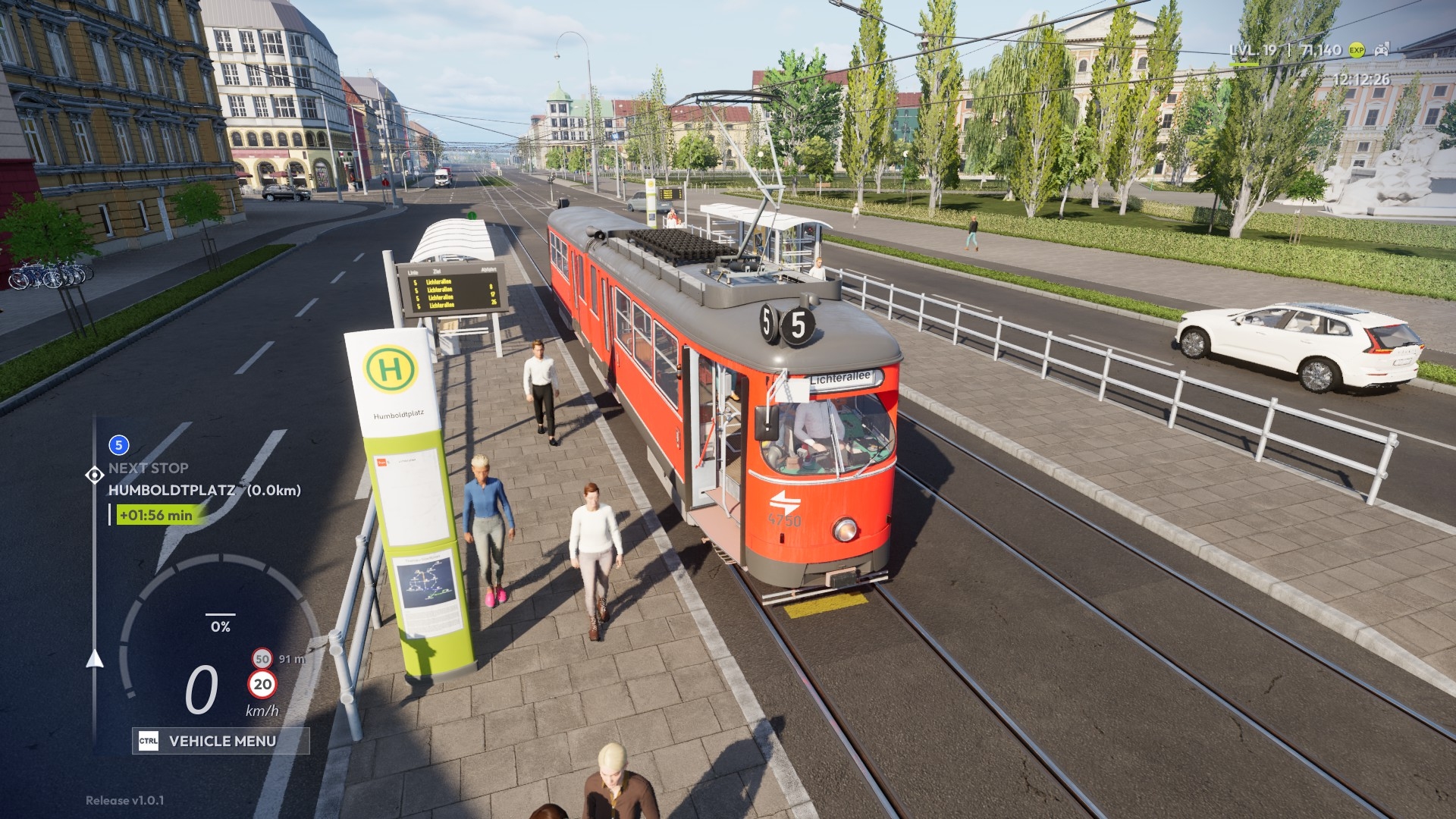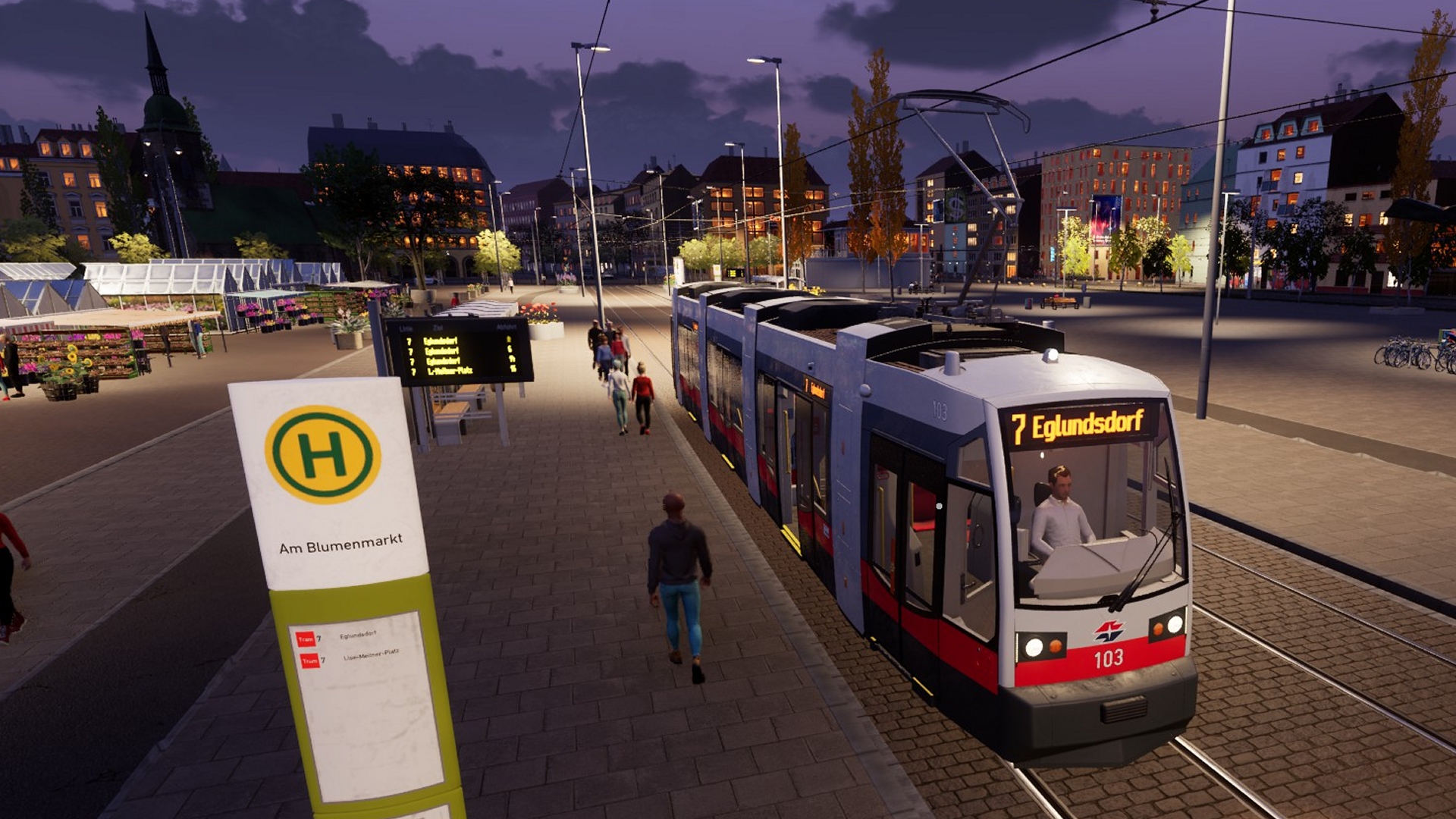The captivating City Transport Simulator: Tram has reminded me of the inherent advantages tram sims have over train sims. When I fire it up, I know my fingers, eyeballs, and little grey cells are in line for a low-impact workout. I know there’s zero chance I’ll end up yawning at monotonous scenery, or willing a ‘distance to next station’ number to tick down faster.
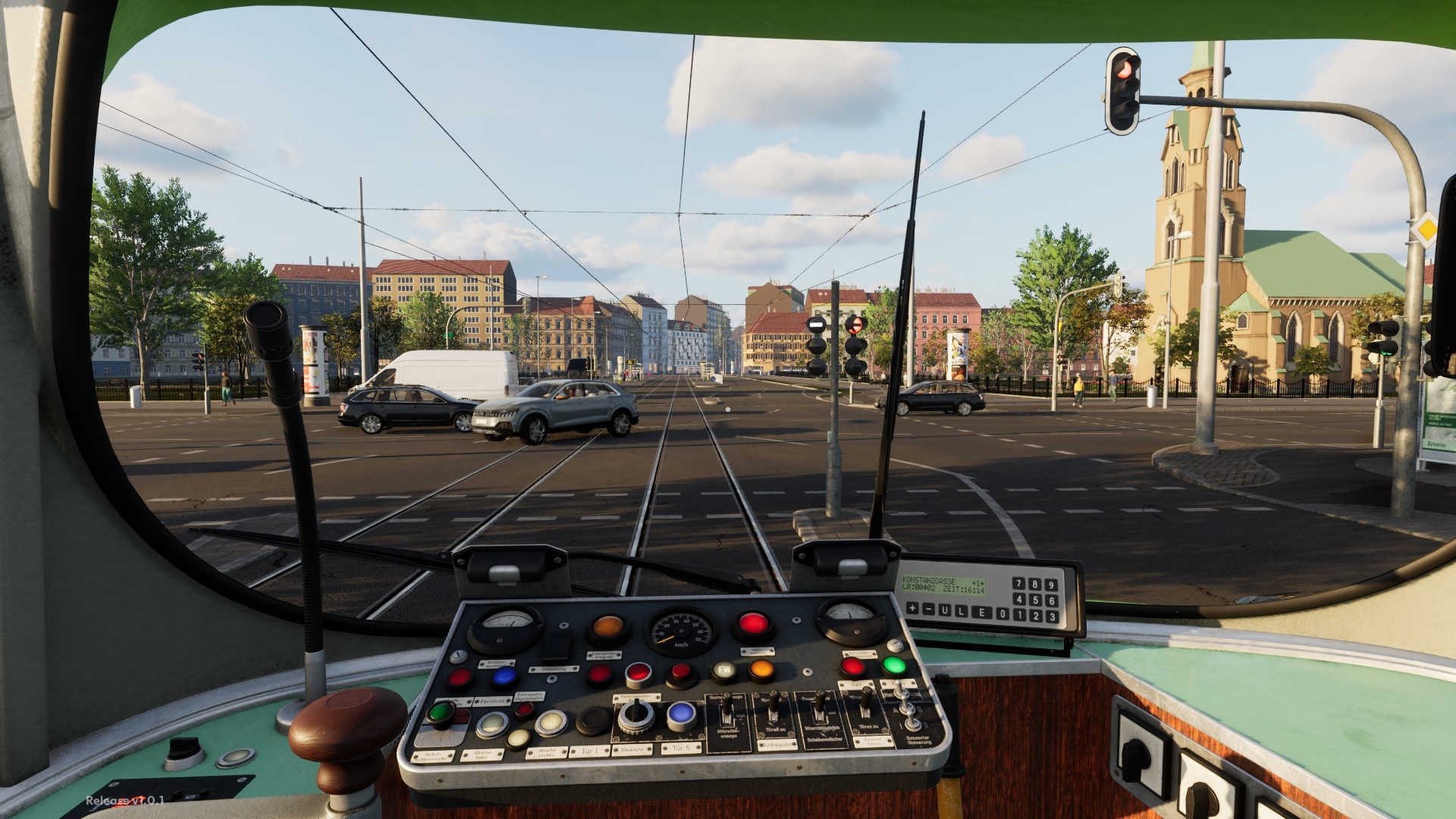
Unfortunately, I also know it won’t be long before I encounter a bug of some kind. Almost all of v1.0.1’s diverse teething troubles are trivial and none have prevented me from warming to the charismatic fictional setting, novel create-your-own-network career mode, and winsome (if potentially familiar) rides, but I understand why some are tutting at ViewApp and Dovetail for woeful quality control.
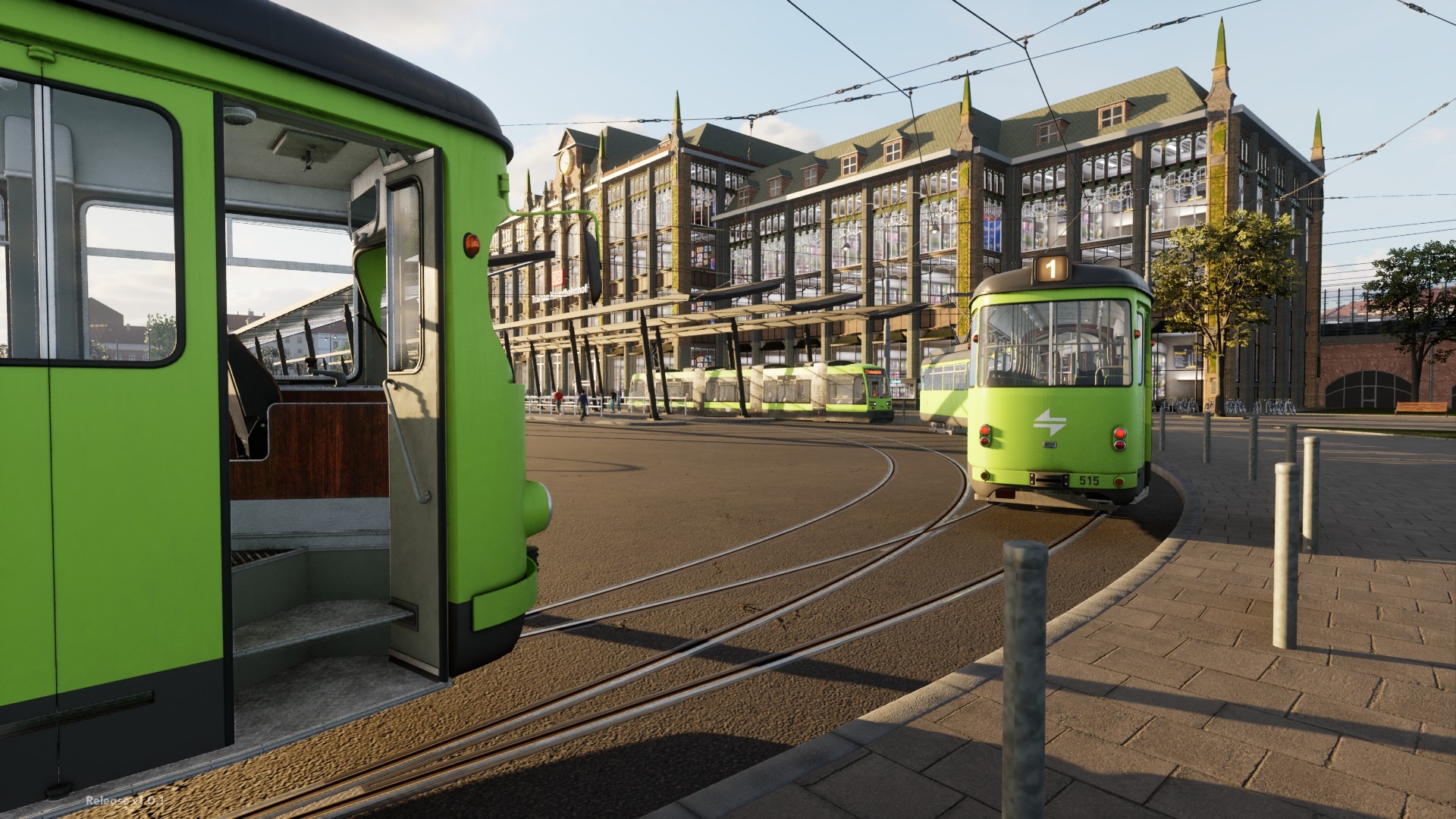
During the ten hours I’ve spent with the seven tram, £40 CTST Collector’s Edition so far, I’ve experienced three crashes and around half a dozen insuperable traffic jams. I’ve grappled with temperamental doors and malfunctioning destination displays in the two oldest tram types, and been unfairly accused of knocking down maybe two dozen pedestrians.*
* Accidents, many of which seem to be triggered by collisions only discernible to the game’s collision-detection routines, prompt a wagging finger and cost you a few XP but are otherwise inconsequential.
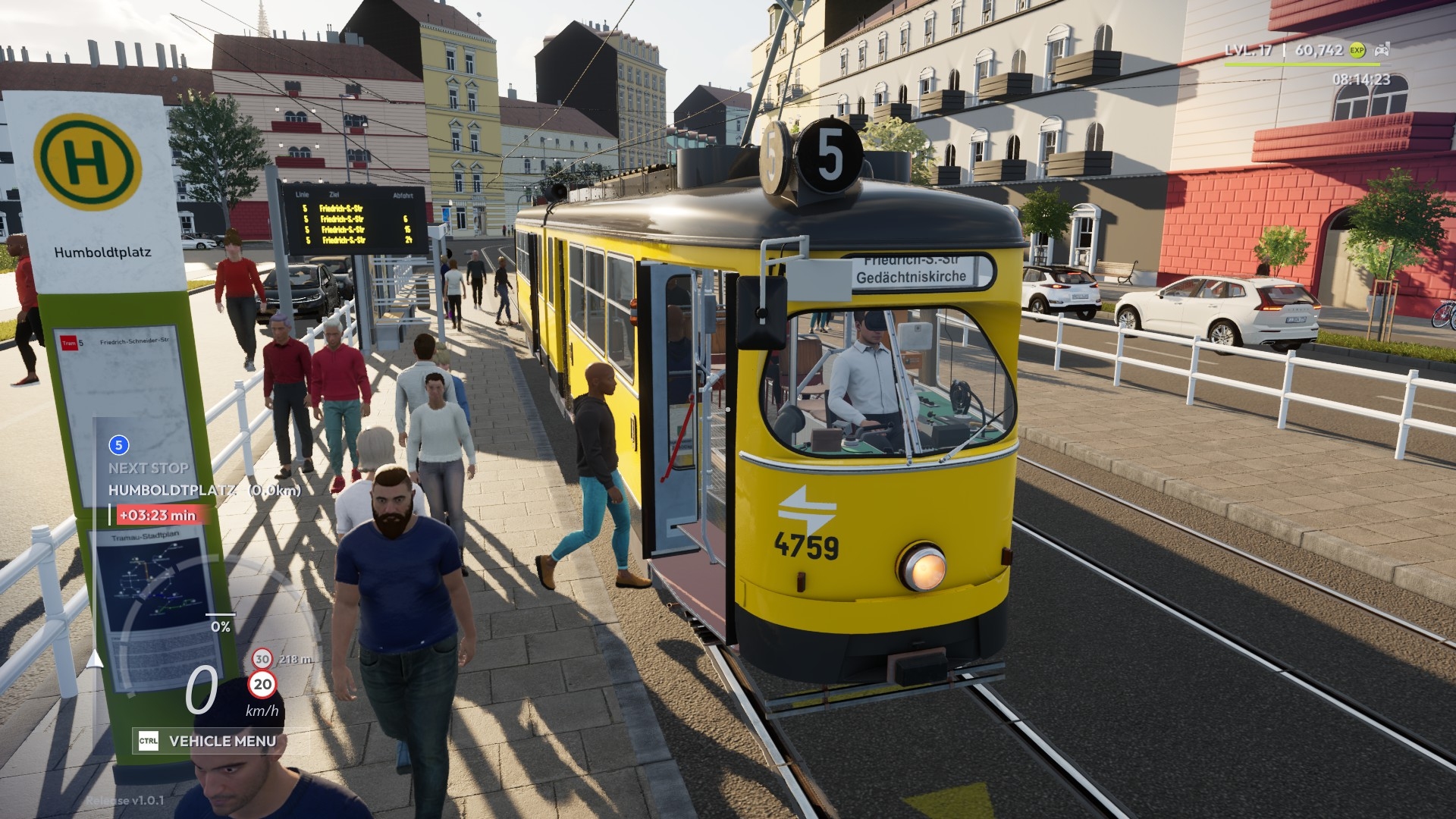
Levitation… ghosting through closed doors… waiting in daft spots at stops… overlapping at pedestrian crossings… ignoring tram bells… while fine most of the time, the inhabitants of Tramau have some disagreeable habits. The city’s cars, vans, and AI trams aren’t nearly as glitch-prone, but now and again will slide through each other without batting a headlight.
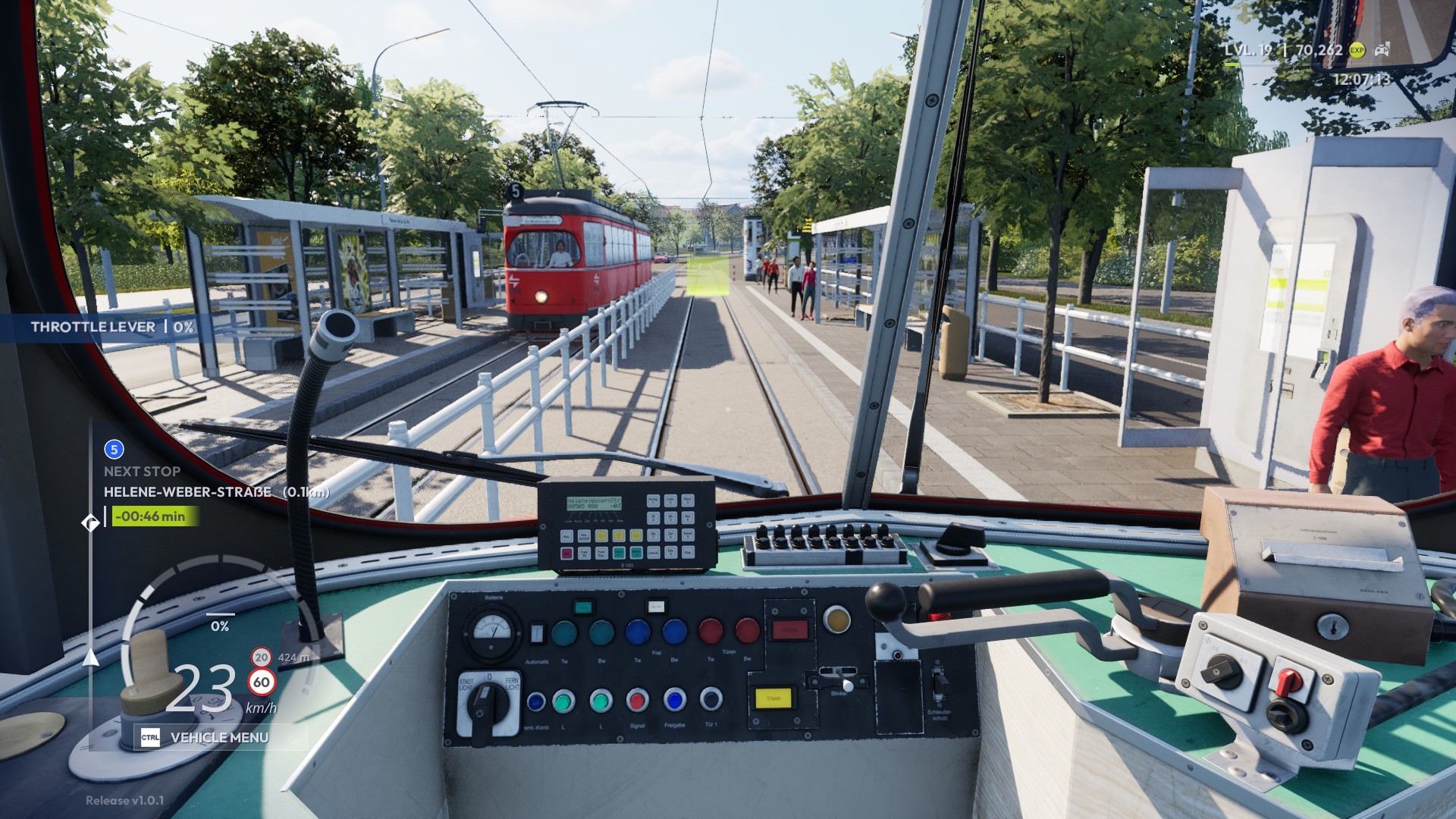
If ViewApp hadn’t done such sterling work in core areas such as physics, graphics, sound, and urban planning, the blemishes – many which have been acknowledged and seem to be getting attention – might have sent me hurrying back to Simt and Tramcity Hakodate.
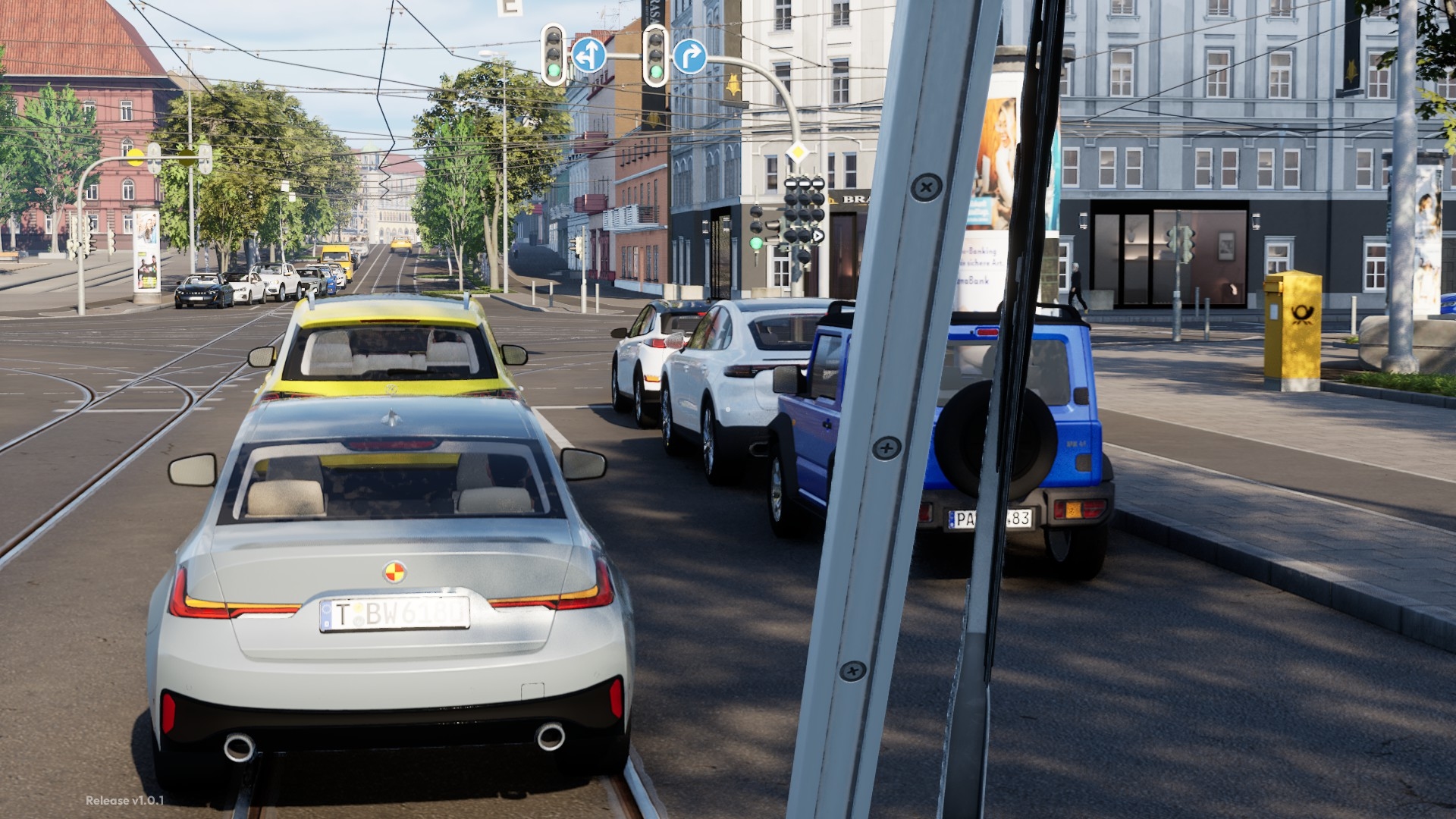
If they’d treated minor speeding offences and negligible traffic light overruns in a more officious manner, I might not have stuck around either. Getting from one end of a line to the other without a second of two of red reproach from the GUI speedo shouldn’t be hard, but with gentle timetable pressure ever-present, and 21 KPH qualifying as speeding at numerous junctions and corners, I rarely seem to manage it.
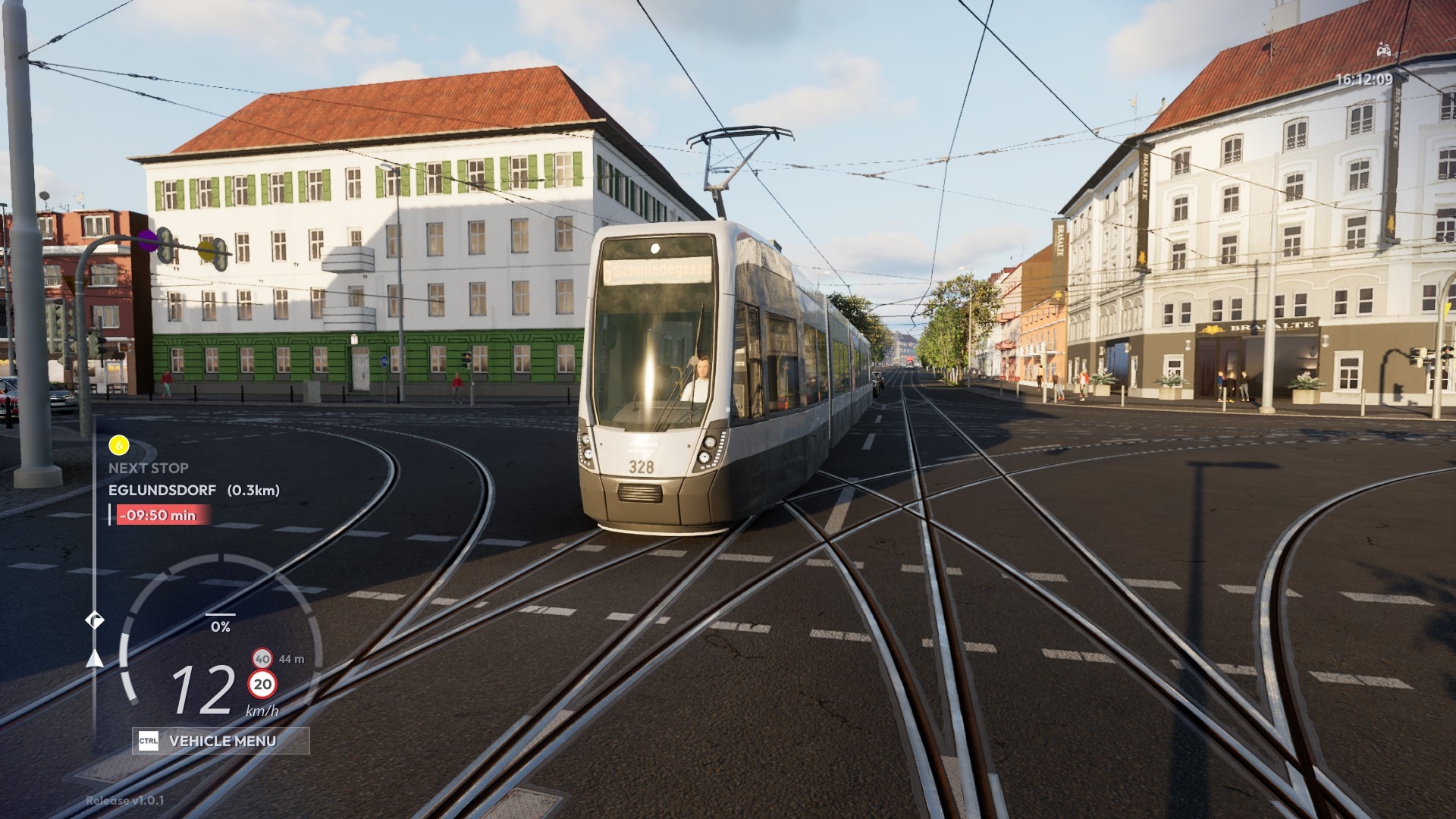
I like the way my small misdemeanors go unpunished. However, CTST could be accused of taking tolerance too far by failing to penalise players in a meaningful way for taking sharp corners at 60+, and slamming into other trams at full tilt.
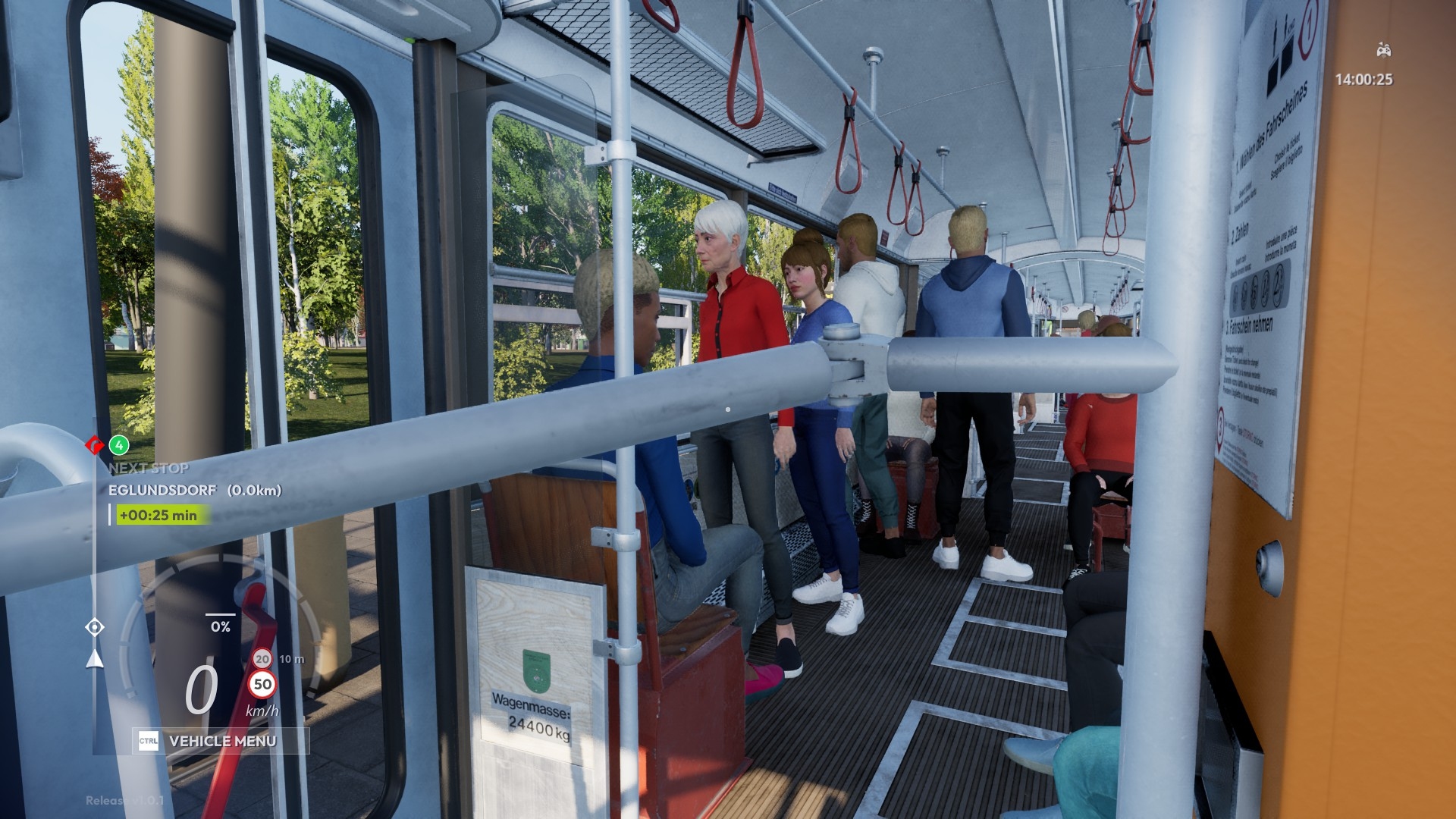
Although derailing and worse isn’t simmed, at lower speeds and in less extreme situations the sim’s pleasingly talkative people movers behave in a manner that seems highly plausible to me. For instance, there’s noticeable deceleration on tight corners and going up hills, and heavily loaded trams are more reluctant to start and stop than empty ones. Should an unbraked GT8N with its reverser set to forwards, roll back if brought to a stop on a slope? If CTST is used as a guide, the answer is ‘yes’.
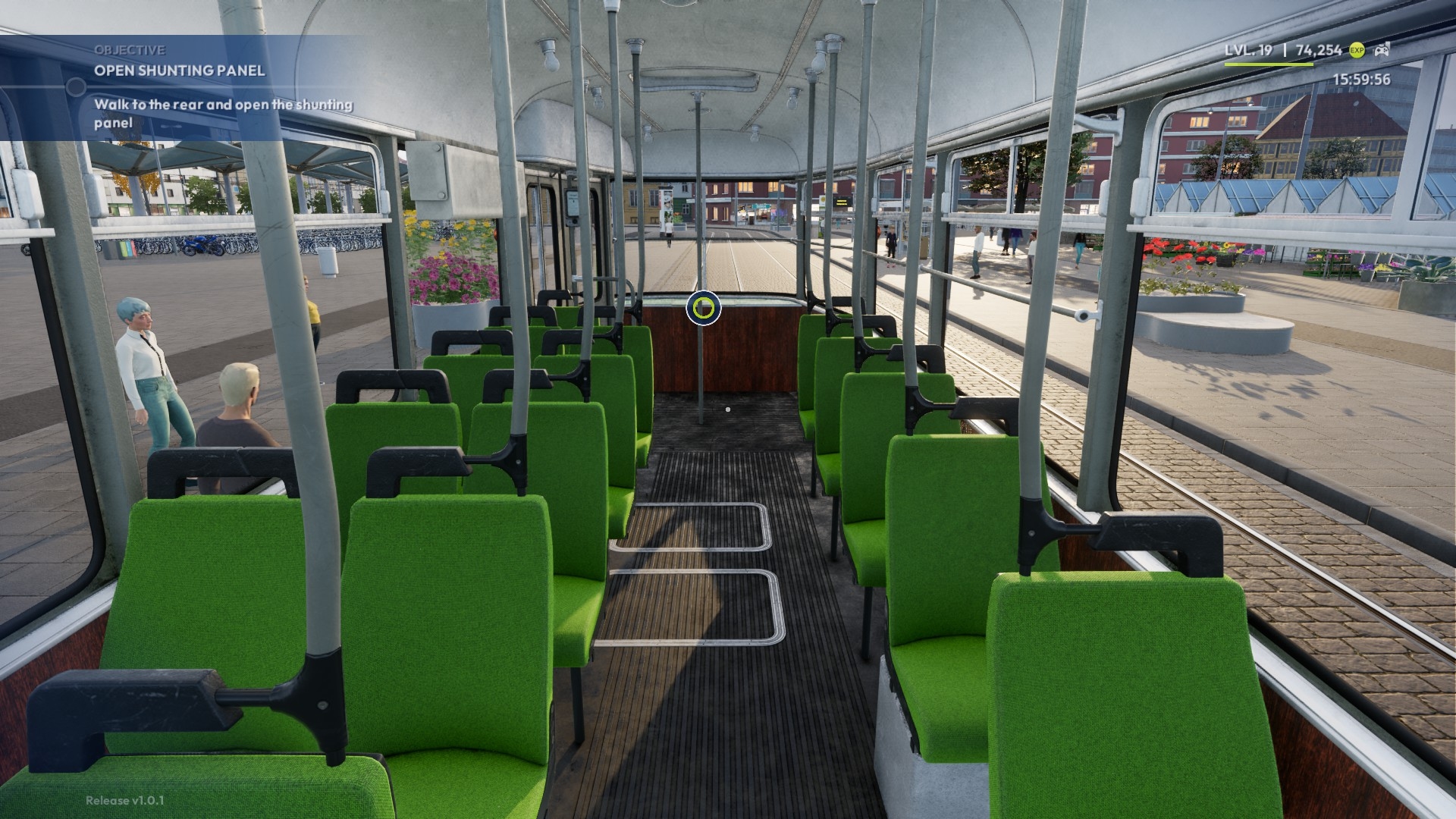
Apparently realistic dynamics are mirrored by impressive clickable cabs and reality-based cold start procedures. Choose to commence, say, a GT8N service in a ‘cold and dark’ state and you’ll need to stroll to the rear of your steed to flick the battery switch, then return to the cab end to untether the rope that releases the sprung pantograph, insert the reverser handle, release the handbrake, and prep the IBIS. Splendidly, the inexperienced and forgetful can enjoy this palaver without an open pdf in one hand. As well as rethinking TramSim Vienna’s slightly weird default keys, and providing a much more helpful GUI this time around, ViewApp have implemented an excellent dynamic tips system.

Upstaging CTST’s shapely electric millipedes isn’t easy, but I reckon picturesque Tramau manages it. Sizeable, fetching, and pretty varied and credible, it’s a place I’m already rather attached to.
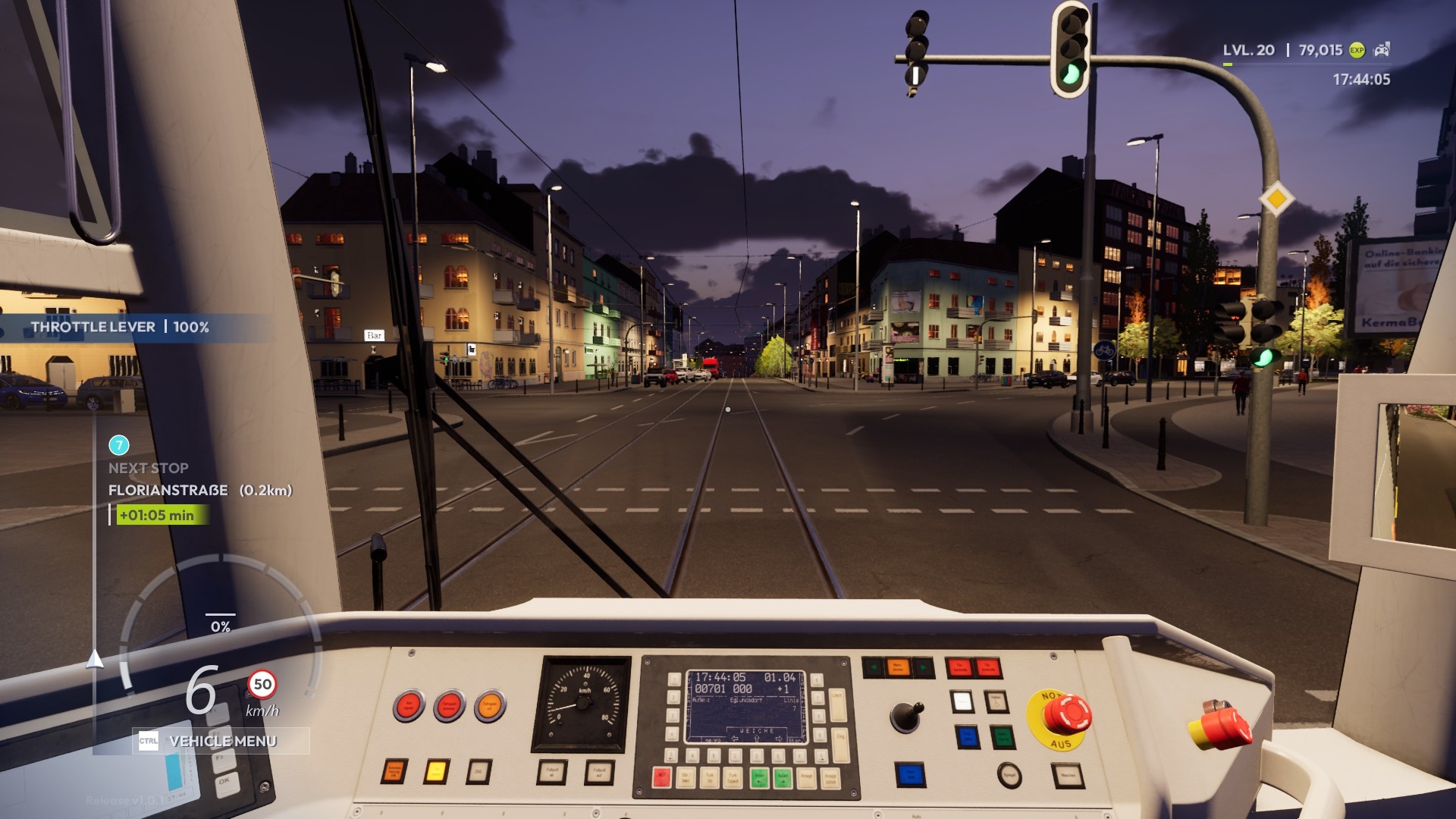
Yes, a cramped ‘old town’ area and a run-down industrial district would have been nice, but as very few public transport sims offer road networks this extensive or beautifully decorated, grumbling about omissions feels a tad rich.
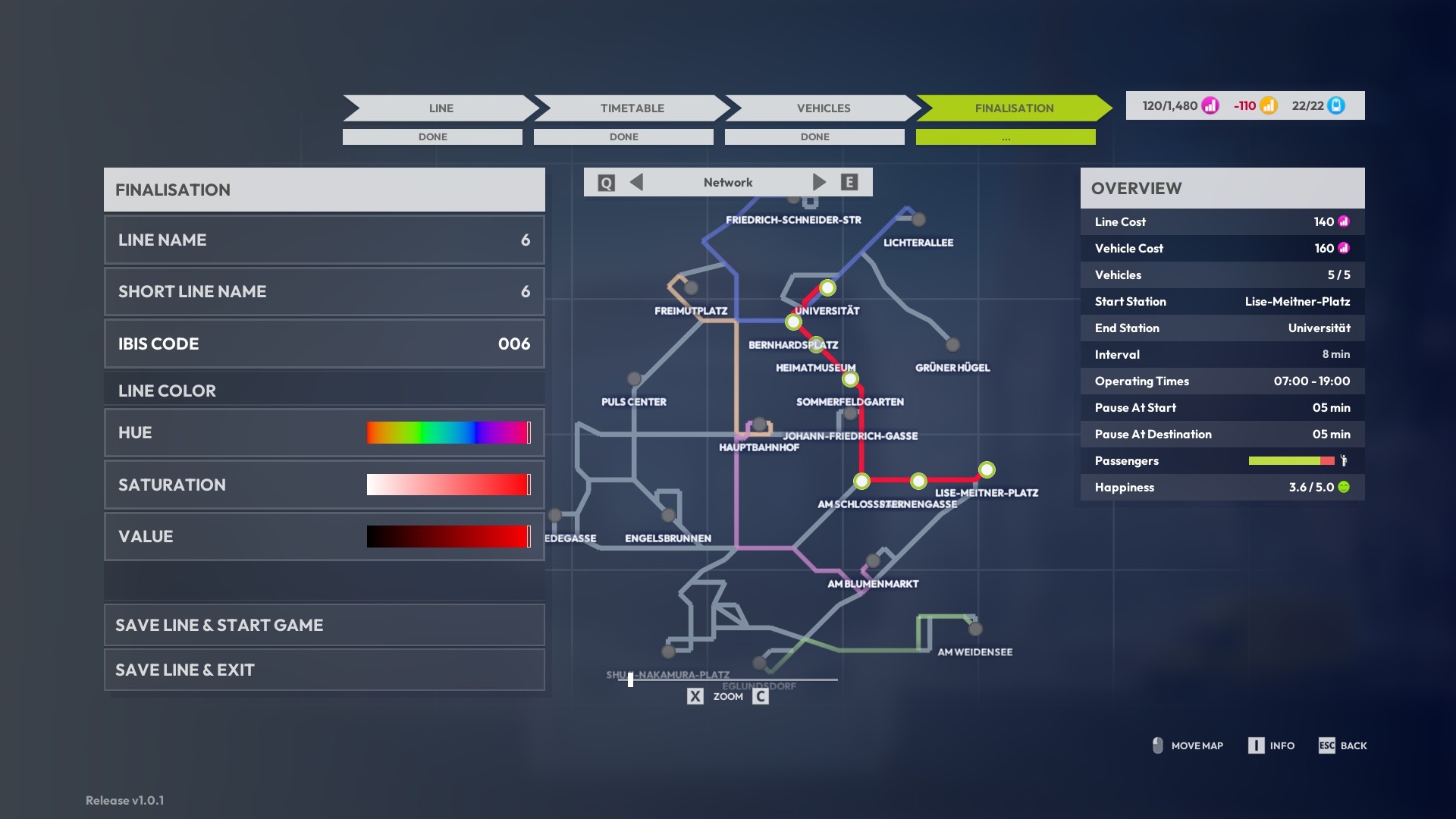
Largely thanks to the appeal and structure of career mode, ten hours in, there are still parts of the city I’ve yet to visit. While I could fill in the blanks with the help of the sandbox option (choose to drive a default route at any time in any tram type) exploring in this way feels a bit like cheating. Personally, I’d rather stick to career play and use the ‘operating points’ and ‘vehicle slots’ I gain every time I level up (Driving garners XPs, the fewer mistakes, the more you earn) to slowly but surely expand my fleet and cover the city map with colourful spaghetti.
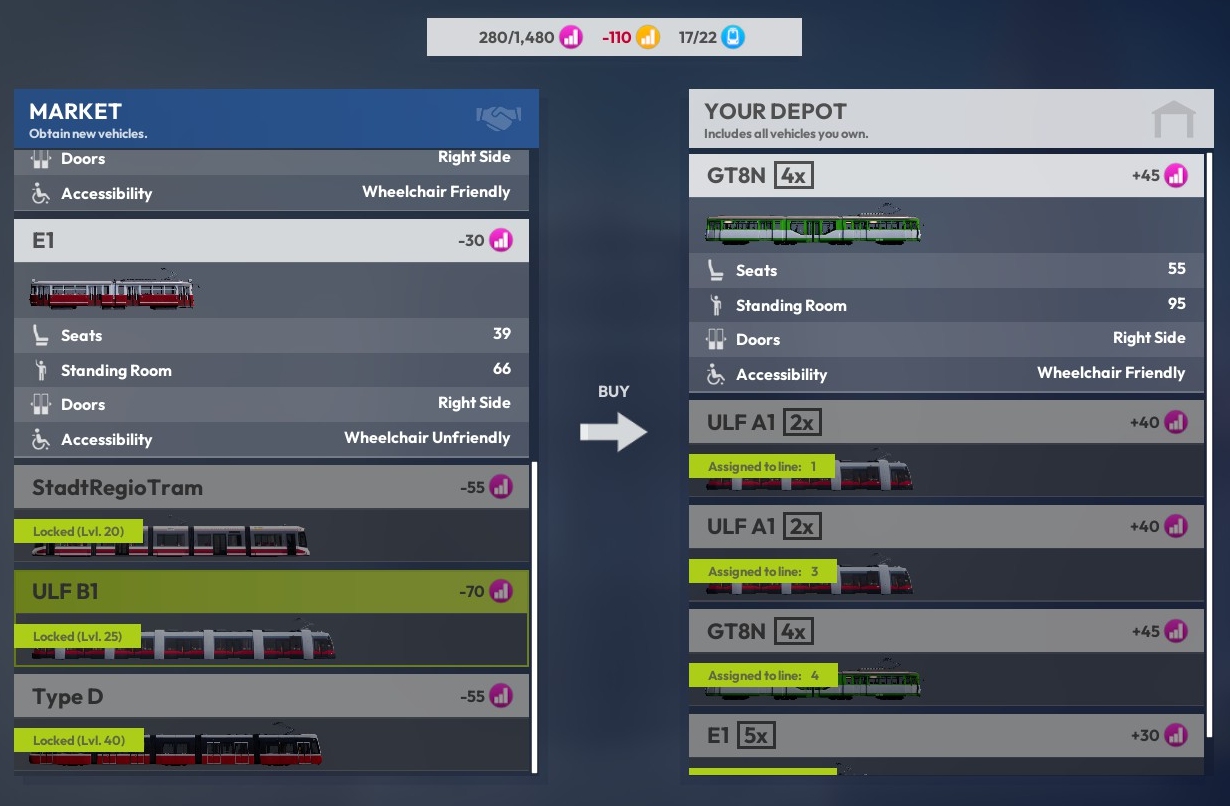
Some aspiring tycoons may find career mode’s lack of depth disappointing. Although the player gets to choose line routes and tram liveries, and can influence passenger happiness by customising service frequency, there’s no option to set prices or hire staff… no hard data on income and expenditure. In truth it’s a thinly-disguised unlock system, but, I’d argue, an ingenious and engaging one.
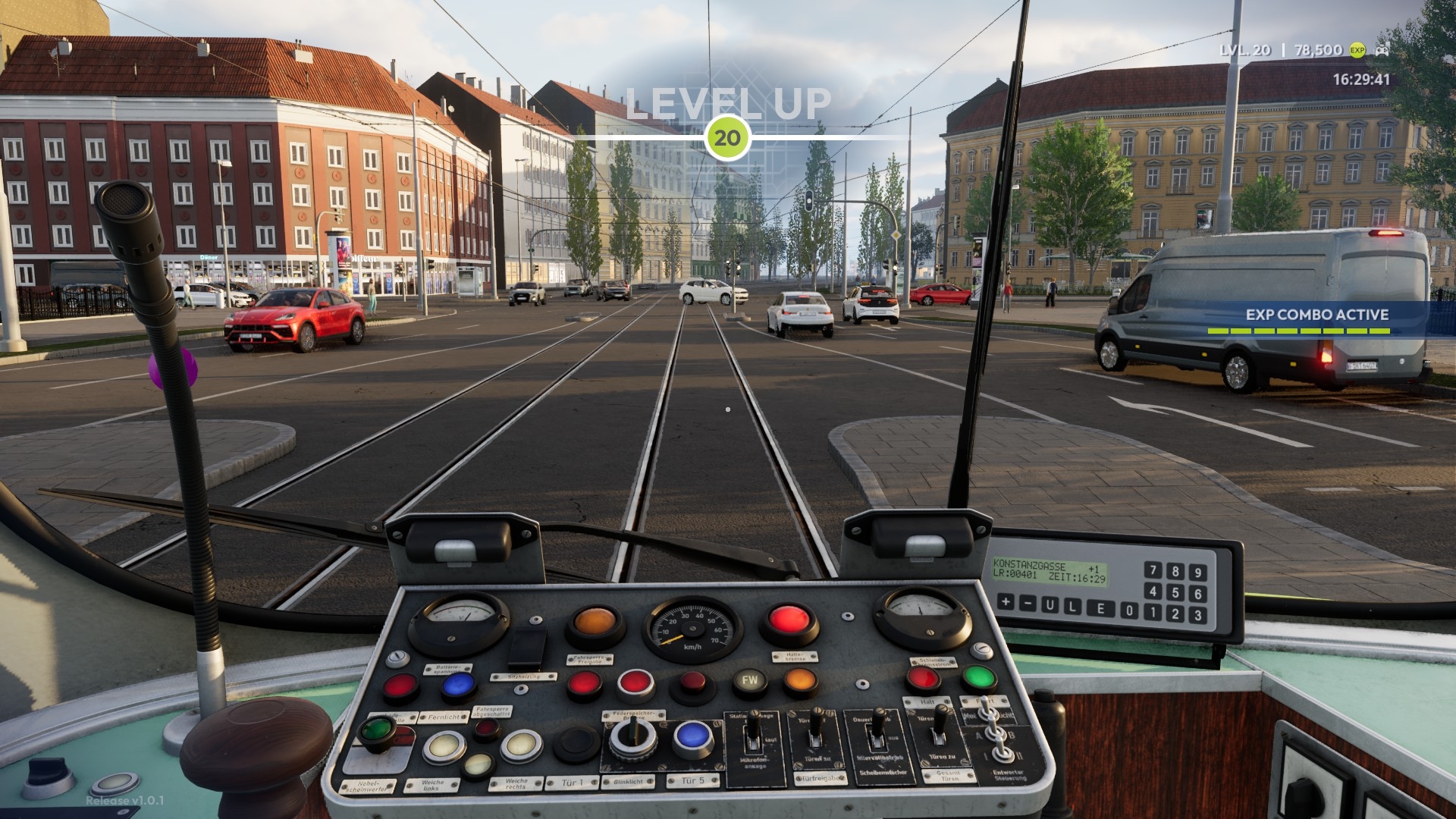
Last night, finally gaining access to the StadtRegioTram by reaching Level 20, produced a pleasant surge of satisfaction.
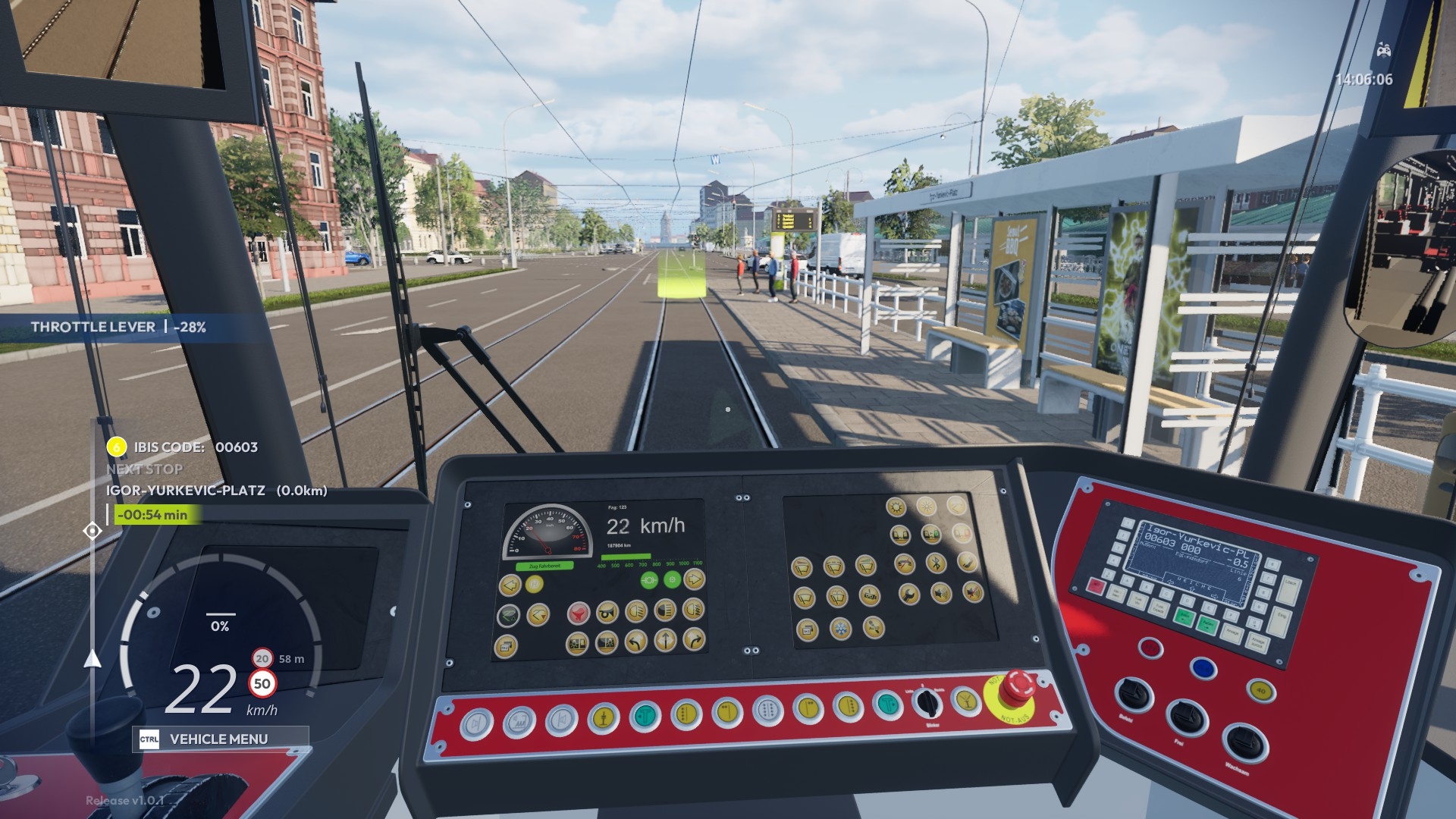
Even if, this time next year, I’m here castigating ViewApp for lack-lustre bug squashing, broken weather promises (currently, it never rains in Tramau), and a sad lack of post-launch DLC, I’m confident City Transport Simulator: Tram will still be my tram sim of choice. Based on past experiences with titles like OMSI, a sim that manages to make mundane activities like negotiating corners, stopping tidily, and waiting for traffic lights to change, this satisfying, stimulating, and evocative, is a sim with enduring appeal.
